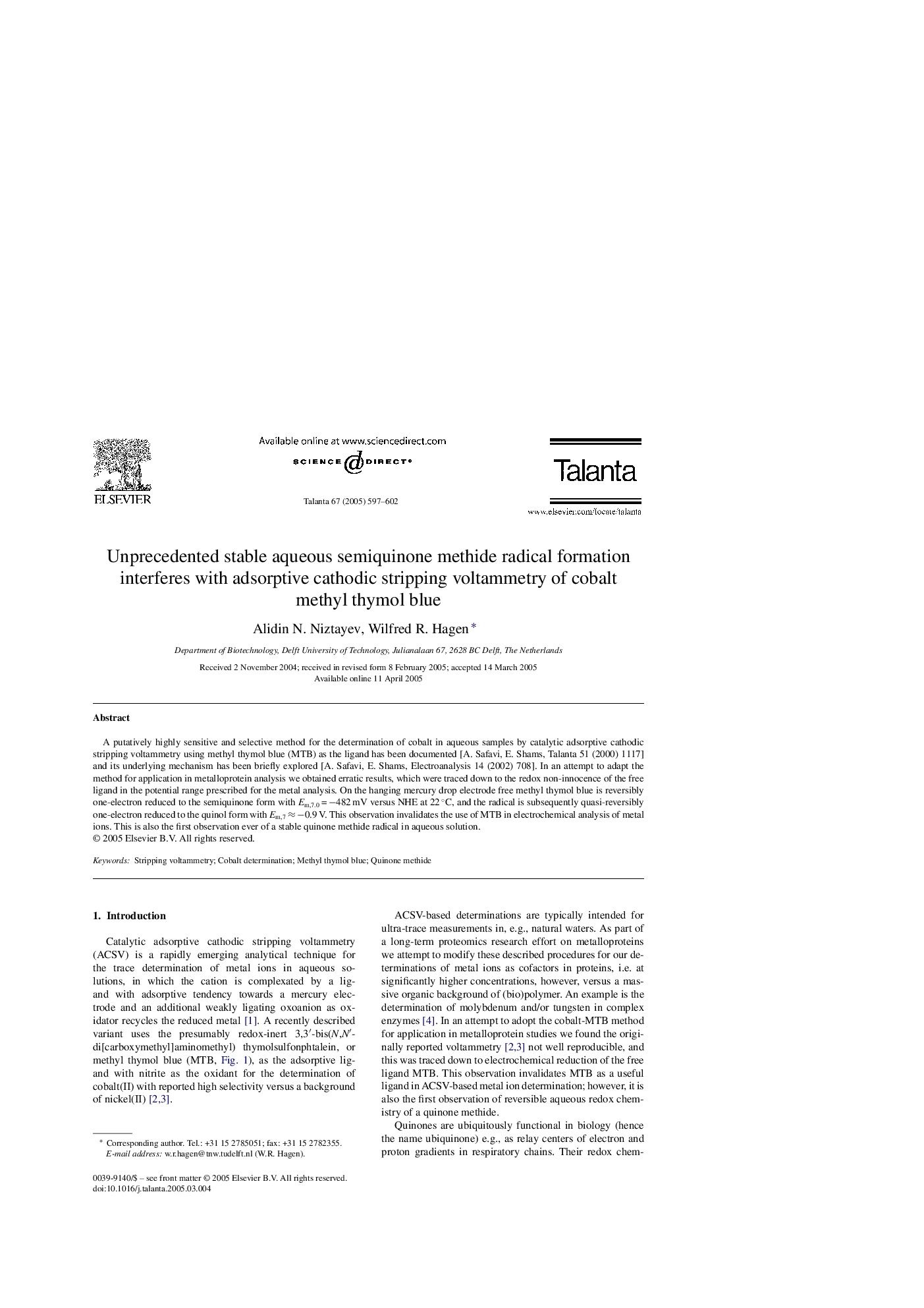| Article ID | Journal | Published Year | Pages | File Type |
|---|---|---|---|---|
| 10560638 | Talanta | 2005 | 6 Pages |
Abstract
A putatively highly sensitive and selective method for the determination of cobalt in aqueous samples by catalytic adsorptive cathodic stripping voltammetry using methyl thymol blue (MTB) as the ligand has been documented [A. Safavi, E. Shams, Talanta 51 (2000) 1117] and its underlying mechanism has been briefly explored [A. Safavi, E. Shams, Electroanalysis 14 (2002) 708]. In an attempt to adapt the method for application in metalloprotein analysis we obtained erratic results, which were traced down to the redox non-innocence of the free ligand in the potential range prescribed for the metal analysis. On the hanging mercury drop electrode free methyl thymol blue is reversibly one-electron reduced to the semiquinone form with Em,7.0 = â482 mV versus NHE at 22 °C, and the radical is subsequently quasi-reversibly one-electron reduced to the quinol form with Em,7 â â0.9 V. This observation invalidates the use of MTB in electrochemical analysis of metal ions. This is also the first observation ever of a stable quinone methide radical in aqueous solution.
Related Topics
Physical Sciences and Engineering
Chemistry
Analytical Chemistry
Authors
Alidin N. Niztayev, Wilfred R. Hagen,
